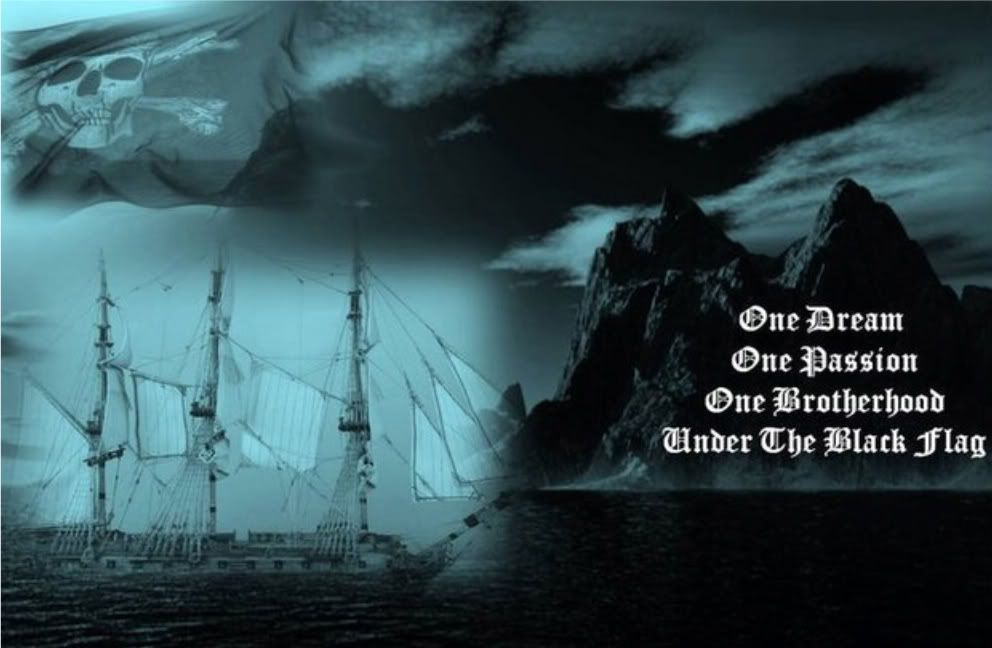The Destruction of Port Royal
The Destruction of Port Royal.articles 2:48 π.μ.
On June 7, 1692, a shattering event occurred in the Caribbean Ocean that was to change that part of the world forever. A terrible earthquake shook the island of Jamaica, a British territory and home of Port Royal, the
largest British shipping port (and pirate haven) in the Americas. Within minutes, the ground opened up and swallowed this den of villainy.
Port Royal was more than just a port. It was captured from the Spanish in 1655 by the British Navy, who turned it into a garrison designed to protect British interests in the area. But it also became a perfect place for privateers to put into dock, and pirates who preyed upon Britain’s enemies found a friendly port here as well; for a while, the British government actually paid them to attack Spanish and French ships, and to defend the city when it was undermanned. Henry Morgan (the famous Captain Morgan), Black Bart Roberts, and Edvard Mansveldt all sailed out from its harbor en route to go pirating.
The town was densely populated for its time, covering about fifty acres and holding about 6500 people, not counting transient populations from the ships putting into port; this made it the same size as Boston, the only other British city in the Americas of similar size. About half the population were involved in piracy or the support of piracy. Honest tradesmen built businesses of brick, and taverns with attached gaming rooms and whorehouses stood next door to them, all on a foundation of sand; the whole city was built on a sand spit that extended out into Kingston Harbor. Catholics, Baptists, Quakers, and Jews all had their own places of worship, and about 1 drinking house stood for every ten citizens of the town.
On this Sunday morning of the wicked city, it is certain that all these gaming and drinking houses were open, that prostitutes were already plying their trade, and that the many pious citizens of the city were attending church or on their ways home. Then, sometime before noon, disaster struck. Over the course of about three minutes, hundreds of people were killed by their houses collapsing on their heads, or by being swallowed up by the liquefied sands. When the earthquake was over, the citizenry sighed with relief, and began to pick things up, rescue the injured, and find shelter, when the tsunamis triggered by the earthquake started to roll onshore. By the end of the afternoon, the city was in ruins.
Homes tilted at crazy angles or had been reduced to rubble where the ground had opened up beneath their foundations. Dead bodies and bones from graves rose to the surface; when the tidal wave rushed onshore carrying ships from the harbor, the long-dead and the newly-dead both rushed back out with it, filling the harbor with a scene of horror.
In the disaster, as many as 3,000 people were killed, nearly half of Port Royal’s population. Another 3,000 were seriously injured, and 3,000 died of injuries and disease over the next several days. Two thirds of the acreage of the town was gone, and the sand foundations of the houses had liquefied in the earthquake, swallowing up virtually every building built on it. Looters quickly stripped the remains of the town and its people, and by the evening many were back to drinking and whoring again, unaffected by the death and horror that surrounded them.
Only five years later, the town was still thought of as the wickedest and most material of places. A fire in 1703 and a terrible hurricane in 1722 visited more destruction on it, and by 1774 there were perhaps a hundred houses left in the town. Kingston, a town across the harbor with a more fortunate base to build homes on, took over Port Royal’s role as commercial and military headquarters for British maritime interests. The attitude toward piracy changed as well. From being a center for the pirate world, Port Royal gradually became hostile. In 1720, forty pirates were hung at Gallows Point, and the port area became known for gibbets as their bodies were put on display.
Port Royal managed to continue existing through the early part of the 20th century; on January 14, 1907, however, another devastating earthquake liquefied the sand under the rebuilt city, destroying it once more. Only a few people still live there. However, a treasure lies beneath the waves just offshore. When old Port Royal was swallowed up by the sea and the earth, buildings went down relatively intact. Today, thirteen acres still exist intact under the water, ranging in depth from only a few inches to about forty feet.
Because of its accessibility and good condition as well as its historical interest, archaeologists are trying to study its remains, and the Jamaican government wants to develop it out as both an archaeological and tourist destination. As Port Royal is the only sunken city in the Western Hemisphere, this makes it very interesting indeed.
Today, however, people are more likely to know Port Royal as the city that Captain Jack Sparrow arrived at in the beginning of the movie Pirates of the Caribbean; the re-creation of the city as done by Disney is fairly accurate. Imagine that bustling town sinking beneath the waves of the Caribbean, and you have a fair picture of what happened back in 1692.













